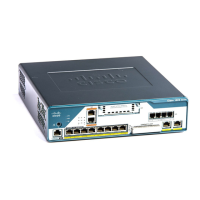Use the show running-config command to verify the configuration of adaptive clock of T1/E1 interfaces:
Router# show running-config | section 0/0/1
controller T1/E1 0/0/1
framing unframed
clock source recovered 1
linecode b8zs
cablelength long 0db
cem-group 0 unframed
interface CEM0/0/1
no ip address
cem 0
Use the show running-config | section recovered-clock command to verify the recovery of adaptive clock
of T1/E1 interfaces:
Router# show running-config | section recovered-clock
recovered-clock 0 0
clock recovered 1 adaptive cem 1 0
Configuring DCR for T1/E1
Configuring Differential Clock Recovery of T1/E1 Interfaces for SAToP
Before You Begin
Before configuring Differential Clock Recovery, CEM must be configured. Below are the guidelines to
configure Differential clock recovery:
• Before you start configuring DCR, RTP must be enabled on the CEM interface. The RTP is used to carry
the differential time.
• The minimum packet size of CEM pseudowires on the network that delivers robust clock recovery is 64
bytes.
To configure the clock on T1/E1 interfaces for SAToP in controller mode, use the following commands:
enable
configure terminal
controller t1/e1 0/0/1
cem-group 0 unframed
clock source recovered 1
exit
To configure RTP header on T1/E1 interfaces in global configuration mode, use the following commands:
interface cem 0/0/1
cem 0
rtp-present
To configure Differential clock recovery of T1/E1 interfaces, use the following commands in global
configuration mode:
recovered-clock 0 0
48-Port T1/E1 CEM Interface Module Configuration Guide, Cisco IOS XE Fuji 16.7.x (Cisco NCS 4200 Series)
43
Clock Recovery System for CESoPSN
Configuring DCR for T1/E1

